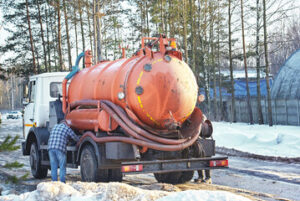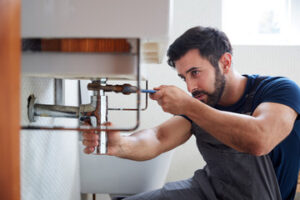Innovative Liquid Waste Disposal Perth management companies focus on sustainability and preserving the environment. They utilize technology to automate workflows and improve customer service, employee productivity, and efficiency.

Some methods of liquid waste disposal are less environmentally friendly than others, including incineration and landfilling. Other ways to handle liquid waste include composting and anaerobic digestion.
An innovative waste management company uses technology to streamline processes for businesses. Their software allows users to manage customer contacts, track opportunities, and tasks, and monitor their pipeline for up to 12 months. The system also allows customers to obtain quotes and book orders online. Their services are available both locally and nationally.
The company provides liquid waste services for restaurants, grocery stores, and hotels. They recycle used cooking oil sustainably and safely dispose of bio-medical waste and contaminated materials. They also offer cost-effective solutions for cleaning grease traps and other plumbing services.
Another company’s smart waste management system is a combination of resilient hardware and beautiful software that empowers cities, businesses, and countries to manage their waste smarter. It reduces collection routes by up to 63% and ensures 97% accuracy on actual waste production. It also helps companies crush their sustainability goals by providing clear-cut decisions for waste diversion, recycling, and donations.
One company specializes in sustainable waste management innovation. They work with companies to help them establish a circular economy and create closed resource loops while ensuring that they comply with all legal obligations. The team starts with a workshop to analyze the company’s waste streams and materials and then works with the right economic actors to implement their recommendations.
The companies under a group provide environmental services and raw material supply. Their modern technologies help to create a sustainable world by turning waste and used materials into valuable resources. Their services include waste disposal, recycling, raw material trading, and consulting. They offer their services to households, commercial and industrial sectors, municipalities, and specialized industries.
They offer a variety of liquid waste management services for businesses and homes in the Westerwaldkreis area. They also have a waste collection system for industrial and municipal customers, which includes a central system that manages and processes all types of waste. This service ensures that all of the company’s customers meet their environmental protection obligations.
They also operate special temporary storage facilities for dangerous substances. These facilities are specially equipped with stringent safety standards and are permanently ventilated to prevent the buildup of gases. In addition to ensuring that dangerous substances are stored safely, these facilities allow for efficient pooling of hazardous waste for transport to disposal plants.
The company’s overseas entity has been appointed by the National Environment Agency (NEA) as the PRS Operator under the Resource Sustainability Act (RSA) to collect regulated consumer e-waste for proper treatment and recycling. This enables the company to achieve a greater degree of sustainability in its operations by channeling e-waste back into production and creating a more circular value chain.
An Italian-based company specializes in the circular economy. They help their clients maximize the value of by-products, secondary raw materials, and leftovers through a platform that allows them to exchange them with other companies. They primarily serve the manufacturing and industrial sectors.
Several companies are working to improve waste management practices and increase recycling rates. They offer customized solutions for businesses of all sizes. Their programs can help businesses save money and reduce landfill waste, resulting in an average of 15% savings on monthly waste and recycling costs. Additionally, their custom-designed programs can ensure that all recycling practices are compliant with local and state regulations.
These innovative technologies are allowing companies to work smarter, not harder. They utilize solar-powered compactors and a cloud platform with FM features to streamline processes, improving collection efficiency. Additionally, they can track fill levels of waste bins and send a notification when a bin needs to be emptied. This enables waste collectors to optimize collection routes and reduce the number of trucks required.
The company is committed to sustainable innovation, and its solutions are designed to reduce waste and pollution in communities around the world. They provide turnkey recycling systems that include design, construction, and operations services to manage all types of waste. They also offer a range of innovative products to minimize environmental impact and optimize processes. These include waste-to-energy, recycling, and composting systems.
Another innovative waste management company provides smart solutions for waste and recycling collections. These solutions are powered by solar energy, making them sustainable and environmentally friendly. They use wirelessly connected sensor technology to monitor the fill level of waste bins and automate waste collection schedules. This reduces collection costs and maximizes diversion rates.
This company offers a variety of waste and recycling collection solutions, including container management, hauler service, and facility support. Their innovative technology and commitment to sustainability are transforming the waste and recycling industry. They provide a wide range of options to meet the waste and recycling goals of any business or property, from large commercial properties to small homes and apartments.
Innovative waste management companies are using technology to reduce environmental pollution and protect human health. They offer a range of services including recycling, resource recovery, and waste diversion from landfills. These solutions help to minimize environmental damage and promote a sustainable circular economy. They also minimize the use of fossil fuels and other non-renewable resources.
One such company is a waste management software provider that helps businesses and cities streamline operations and meet sustainability goals. Its platform offers a full suite of tools for waste and recycling management, including mobile apps, web-based software, and in-vehicle technology. This solution provides real-time visualization of key performance indicators to improve decision-making and enhance operational efficiency.
Another company that uses innovative technology to improve waste management is RED Industries. Their RED Tracker system is an IoT digital tracking and monitoring system that allows waste management companies to monitor container locations, movements, and inventory in a single, centralized location. This system allows users to track container locations and optimize route planning, reducing costs and improving customer service.
The company also offers a variety of other features, including walk-around vehicle checks, run sheet and job details, navigation, electronic signature capture, raising job issues, and taking photos. The software is designed to work offline as well, enabling waste management professionals to work even when they are away from the office.
Another waste management technology company is Specim, which offers hyperspectral imaging cameras and systems that analyze unique spectral fingerprints to differentiate between different materials. This can improve waste sorting and increase recycling rates. It also reduces waste disposal and increases staff productivity by minimizing workflow disruptions. Moreover, it can help businesses reduce their costs and improve the quality of their products.
Pneumatic Waste Pipe
The pneumatic waste pipe is an alternative to garbage trucks. These systems are powered by electricity and move trash through pipes in buildings and neighborhoods. They require less labor than traditional collection and are more cost-effective than truck-based systems. They also have lower environmental impacts and produce fewer emissions. These advantages have led to the introduction of these systems in some cities. However, issues with budgeting and logistics have hindered their wider adoption.
These tube-based waste disposal systems are popular in some countries, including the country. However, their upfront costs can be high and they are difficult to integrate into existing urban infrastructure. In addition, they can be prone to damage and blockages due to misuse. Such issues can result in the system shutting down or forcing engineers to enter the pipes to repair them.
Unlike traditional garbage trucks, the tubes can also transport reusable and recyclable materials along with household waste. This is a huge advantage for the environment, as these materials are diverted from landfills. In addition, the systems reduce traffic congestion and fuel use by avoiding short trips between residential waste collection sites. Pneumatic waste systems are also safer than conventional trucks, as they reduce the risk of fire and prevent animal access to waste.
However, some research has found that pneumatic systems can still have higher overall energy consumption and greenhouse gas emissions than truck-based collection systems. The energy requirements depend on the type of power used to operate them, which can have a significant impact on their sustainability.
One way to reduce the energy demands of a pneumatic waste disposal system is to install smaller pipes. According to the company behind the system in the state, the pneumatic waste disposal tubes are a third of the size of their traditional garbage truck counterparts. The developer of Hudson Yards plans to use similar technology in its towers. This will reduce the number of trucks needed for waste collection and cut diesel fuel consumption.
